#seed collecting
Text
Collecting Milkweed Seeds - All Facts, All Seeds, No Fluff
(OK but please also consider I'm not an ~expert~ I'm not a ~scholar~ I'm just a nerd on Tumblr who really likes milkweed and wanted to make a fun lil post about it)
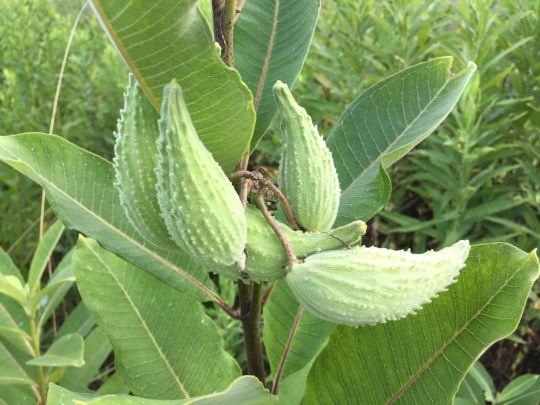
[Image ID: a green, leafy common milkweed plant (Asclepias syriaca) with five large, ovalish and bumpy green seed pods. The seed pods are currently unopened.]
It’s fall, which means if you haven’t seen them already, now’s the time that milkweed plants will start producing seed pods! (Well, technically, they’re called follicles, but fuck it they’re seed pods). Each pod has dozens of seeds inside, some species can even have up to 200 seeds, so even collecting just a few can be a good way to boost your pollinator gardening efforts big time! What you do with them then is up to you--adding life to your backyard garden, sharing with friends, making seed bombs--but first you’ve gotta collect them.
The first thing you want to do is identify your milkweed plants--in an ideal world, you’d be able to tell precisely what kind of milkweed you’re collecting from (so you can know precisely what growing conditions that species prefers.) But when they’re dying back, forming pods, and releasing their seeds, it can be hard to tell. It helps to visit sites early, to know what milkweeds are there, and while you’re there you might even find some forming pods.
It can be helpful to band off the pods early! This will keep the seeds from escaping, so you can come back later and collect them! I would only do this for a couple of pods--each pod has a lot of seed in it, so only taking one or two from each plant should still net you plenty of rewards! When I’m doing this in my backyard, I tend to use rubber bands--the size of rubber band you’ll need varies depending on the species. I’ve also seen people use the lacy-looking jewelry bags to a similar effect--if the pod splits open, all the seeds get trapped in the bag!


[Image ID: the first image is of appears to be swamp milkweed (Asclepias incarnata) with about fifteen long, green, smooth and pointed seed pods. Most of the pods have small black rubber bands wrapped around the midsections. The second image is of what appears to be common milkweed (Asclepias syriaca) with two large, ovalish and bumpy green seed pods. A white fine mesh bag has been tied over the pods.]
For people who want to get seeds from unopened pods, you have to be very careful not to force open a pod that isn’t ready--otherwise, the seeds inside won’t fully develop. How do you tell if a pod is ripe? There’s a seam in each pod, and it should open fairly easily with minimal pressure if it’s basically ready. If you’re basically prying it open, you’re too early. The seeds inside should be a nice dark color, and be plump in the middle--if they’re creamy colored or light orange, you’re too early. There may be some undeveloped seeds in each pod (I am talking maybe 1 to 3 here), but if the majority of them are ready, you’re good to go!

[Image ID: a tropical milkweed (Asclepias curassavica) seed pod that has been opened at the seam, revealing dark brown seeds and lots of creamy white floss. Four seeds are floating away from the pod on fluffy white comas. The pod is being held between a white person's fingers.]
I’ve also seen people who go late late late into the season, after most of the pods have already fully split off and released their seeds. Some of the seeds occasionally stay in the pod, so they’ll take the leftovers that didn’t get scattered after winter passes. That’s a fair strategy! I prefer to get mine way early on, so I can get a clear ID of what kind of milkweed it is (some will flower and produce pods at the same time), but if you already got an ID early in the season and then come back later this can also work! But…

[Image ID: several dried brown seed pods have opened fully, releasing a cloud of milkweed floss with seeds attached. Some seeds are still in the pods, but many are primed to float away.]
There is, however, one thing that tends to be a bit annoying about collecting milkweed seeds--and that’s the fluff. These fluffy white bits attached to the seed--called comas--function similarly to the iconic fluffy dandelion seed. A milkweed seed’s coma allows it to float through the air and on the water until it (hypothetically) reaches bare soil or an otherwise suitable start to settle down and germinate. If you’re collecting the seeds for later use, though, that same coma can mean your milkweed seeds are traveling through the air and away from where you’re collecting them, or all over your apartment once you get them home. Removing the comas by hand is an option, but tedious, and still leads to a nice pile of fluffy that will get airborne at the first gust of wind. At the end of the day, for many people trying to collect milkweed seeds, the coma is just an annoying part they dread.
Fortunately, there are plenty of ways to collect milkweed seeds without having to deal with the comas long-term!

[Image ID: A single brown milkweed seed floating on a comparatively huge mess of white fibers.]
Method 1
So this is my favorite method because it's honestly one of the simplest and easiest once you get used to it. You open the pod, grip the top part of the middle ‘pith’ section tight, and gently scrape off the seeds into a bowl or bag. This leaves you with almost no fluff in your collection bin, and you can then toss the middle fluffy part--or I’ve heard of people collecting milkweed fluff for spinning! Most of the videos I’ve seen on it use common milkweed or other large milkweed pods as an example--however, I’ve successfully done this with smaller milkweed pods like A. curassavica as well.
youtube
Method 2
This method is one I’ve used in the past. Take the seeds and fluff and put them into a bag (paper or plastic) and add a coin or two. Shake the bag around--a lot. The coin will dislodge the comas from the seeds. The seeds will then drop to the bottom of the container, and the fluff will float around on the top. I’ve also seen this with buckets and blocks, like in the video below!
Method 3
I’ve seen a handful of people discuss burning the floss of the seeds! Apparently the seeds themselves aren’t damaged badly by the fire, though honestly this is a method that I am simply too anxious to try myself.
youtube
Method 4
This was a method I found while I was looking for other methods people have done. Apparently, you can just roll the pod between your hands and it’ll work to dislodge the seeds? I may have to try it next time!
youtube
Hopefully this advice is helpful for you all! I know collecting seeds was a hassle for me before I learned my favorite method. If I had a nickel for every time I got yelled at for releasing milkweed fluff into the house...
If you've got a method that I haven't heard about yet, let me know!! I'm always down to learn more about milkweed, and it can also help someone else down the line!
#milkweed#asclepias#seed saving#seed collecting#pollinator garden#outdoor gardening#gardening#flowers#ani rambles#out of queue#i think this was my first time doing image descriptions??? if they suck ass let me know and I'll Make Adjustments As Recommended#i've seen people talk about spinning the milkweed floss??? but I saw online that it was too brittle to be spun????#but either way if you wanna save the floss and do Stuff with it go for it#did you know. or actually this is me functioning from memory.#but if I recall correctly I believe in either the WWI era or the WWII era#people would pay kids to go around fields collecting milkweed seed pods and pay them by the pound#and then they'd take the floss and use it to fill life jackets for soldiers?#i think this was less of a 'extorted child labor sweat shop' deal and more of a like#'hey kids wanna earn some cash and also be a Patriotic Citizen? go find some seed pods and we'll give you money'#which i guess many people WOULD consider an Extorted Child Labor kinda deal but like#idk seems like a chill deal to me#anyways hope you guys like this post#Youtube
126 notes
·
View notes
Text
It’s seed collecting season in my poison garden so here is some poppy seed ASMR. Sound on!
#bane folk#opium poppy#breadseed poppy#poisonous plants#toxic plants#medicinal plants#seed saving#seed collecting#poison garden#poison path
75 notes
·
View notes
Text

Seeds are miraculous little things if you ponder them... They contain the potential for a whole plant in a biological "time capsule". As gardeners in Europe and the Northern Hemisphere start planning their seed orders, it's a perfect time to learn more about germination. Germination is the term for an organism growing into a whole adult plant from a seed or a spore, and it is used scientifically to talk about fungi and bacteria as well as plants. A typical plant seed contains a plant embryo, food reserves, and a seed coat. Depending on the species, mature seeds can be stored for years since the plant embryo is in a dehydrated state of suspended animation.
In nature, germinating at the wrong time in unfavourable conditions could spell disaster for the new plant. Seeds rely on the signals from water, temperature, oxygen, and light.
Soaking seeds is an excellent way to start germination. The seed coat is gently scarified with sandpaper or a nail file to break the watertight seal and allow water to enter the seed interior. The seeds often double in size as their tissues soak up the water in a process called imbibition. Water activates hydrolytic enzymes which start the seed's biological metabolism.
Tree seeds from temperate climates usually need cold stratification to germinate. The seed is kept in soil at low temperatures around 4 C (like a fridge) for several months before returning to room temperature. This temperature change tells the seed winter has passed and spring has arrived. Simply leaving potted seeds in a cold frame overwinter is ideal in Europe.
Seeds along need oxygen since seedlings do aerobic respiration until they're mature enough to start photosynthesising. Hard packed or waterlogged soil may contain insufficient oxygen and stop seeds from sprouting. Many tree seeds need exposure to light through a thin layer of soil to let them know that there's a "clearing" in the forest.Most kitchen garden seeds do well with soaking and exposure to warm temperatures since they are originally tropical plants.
This plate of seeds was collected in January in Hyde Park, London.
#seeds#germination#seedstarting#PlantBiology#plantscience#seedstorage#stratification#TreeSeeds#katia_plantscientist#gardening#gardeningtips#plants#plantfacts#stratification#seedsaving#seedstartingtime#semillos#nuts#fruits#plantlife
#katia plant scientist#botany#plant biology#plants#plant science#seeds#seed starting#seed saving#stratification#seed collecting#plant#plant aesthetic#plant scientist#plantblr#plantcore#planting#gardening#tree seeds#gardening tips
6 notes
·
View notes
Text
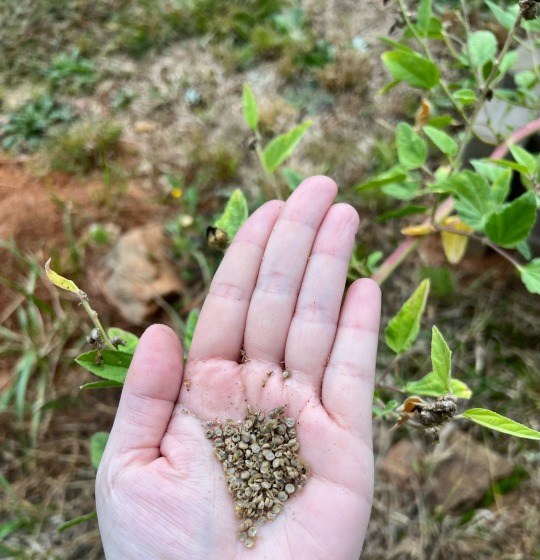
10/15/23 ~ Collected Marshmallow Root seeds from my plant! 😁
#collecting seeds#starting seeds#seed collecting#medicinal herbs#marshmallow root#seed saving#container gardening#sustainable gardening#vegetable gardening#veganuary#grow organic#grow your own food#tomato garden#organic gardening#plants and herbs#gardening blog
5 notes
·
View notes
Text

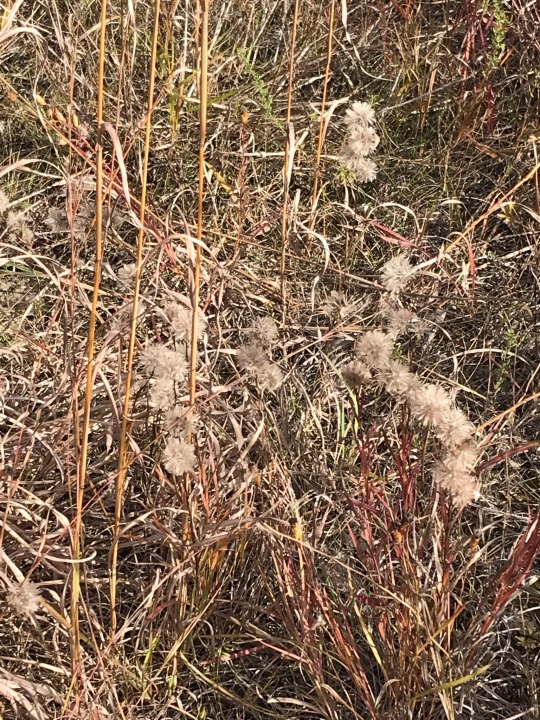

Met some cool tall grass prairie friends today doing seed collecting for a land trust: Canada wild rye, cylindrical blazing star, and little bluestem (with big bluestem in the background)
#personal#mine#ontario nature#seed collecting#tall grass prairie#I also accidentally collected about 143 showy tick trefoils seeds on my pants#ecology#enviro student shit
4 notes
·
View notes
Text

There is not a force in heaven or hell that will stop me from coveting the milkweed pods at the edge of the parking lot.
So plump, what are they doing with all that?
2 notes
·
View notes
Text
June 2023: Harvest & Lurkers In The Dark
Today’s backyard garden harvest:

This part of the neighborhood had some power out due to recent storms. I could hear the whir of generators. Little did I know that we’d have an encounter in the dark.
The boys & I were almost to the street corner before that furthest light when a Yorkie ran up barking at us. Its owner apologized saying “I don’t have any control over him.” I politely said “that’s okay” while thinking “no shit! You don’t have control... I can hear the sound of the big ass handle of its retractable lease clattering on the sidewalk.” I pulled Silverback & The Red Menace close so they would know I was “the mastiff” & if any aggression was needed, it would be from me. For those that don’t know, Lhasa Apsos were basically the alarm system at Tibetan monasteries for ages. They barked & the Tibetan mastiffs came running but trust me they followed them into the fray.
Considering the situation, the boys were well behaved. We finally got to the corner & the Yorkie broke off engagement once we were past the edge of its yard. Its owner asked if “we were alright.” He meant me & him. I said “we’re cool.” No harm had been done & I didn’t have the heart to tell him that I was more concerned about my dogs doing his dog harm than his doing mine any. I mean, The Red Menace, who is the smaller of the two, has 2 rats, 1 squirrel & 3 birds on his kill list. Doing grievous harm to a Yorkie might have been enough to bump him to second level:

#garden#backyard garden#seed collecting#coriander seeds#runner beans#tomato#better boy#blueberries#strawberries#homegrown#seen while walking#adventures in dog walking#Lhasa Apsos#life in memphis
3 notes
·
View notes
Text
It might be snowing out there tonight but there was a little bit of spring in the mailbox!
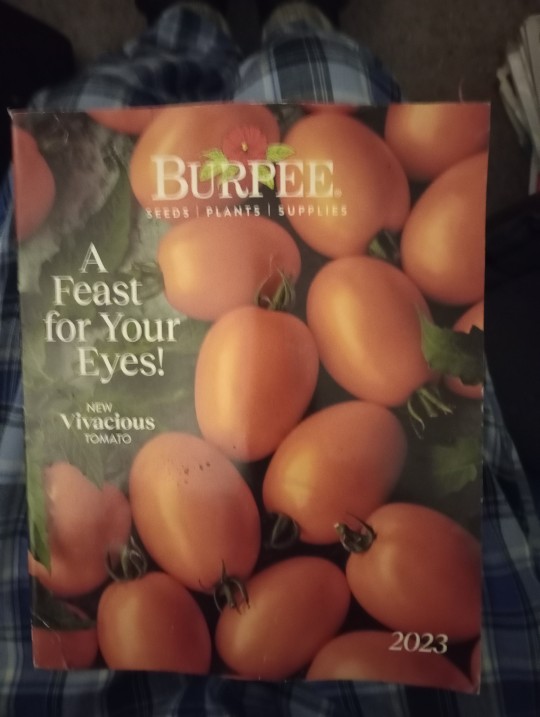
#Burpee Seeds#seed catalogs#seed collecting#homestead#country living#farmlife#central pennsylvania#my work#farm#garden#pennsylvania#homesteading#hustle
5 notes
·
View notes
Text
a plant is a big complicated machine but it is ALSO a little guy. you know
#thinkin again…..thinking about the guys….#collected seeds in the dark this weekend…..on my bike…..#getting collected for big seed test studying again….
7K notes
·
View notes
Note
Hi Ani - I wonder do you have some resources or insights about collecting wildflower seeds? Particularly in bulk, and prepping them for distribution?
I ask because I've noticed that no-mow areas are becoming more common where I live, which is good, but since these are new projects what they amount to are areas of grass-but-taller. I have access to two properly wild abundance, and would like to propagate some of that in upcoming no-mow spaces.
Hello!
I would like to preface this by making it clear that I've never collected wildflower seeds in bulk. Honestly, the most wildflower seed collecting I usually do year by year is collecting milkweed seed when I find the pods in time, in my own backyard. Every so often I'll try and teach myself how to collect seeds from other plants (I'm pretty confident with sunflowers, tithonia rotundifolia, and zinnias, I've tried black eyed susans before but never germinated any to test the success), but for the most part I've got my One (1) specialty and am slowly learning just like you are!
With that in mind, I would like to give some encouraging news--at least in my experience, wildflowers are already producing seeds in pretty big numbers! Just one milkweed seed pod gives enough seed for at least two or three seed packets (unless your seed packs are extremely generous), so collecting from a handful of plants can give a pretty good amount! Of course, though, I don't know how big the no-mow spaces you're thinking of propagating in are...
When it comes to learning how to collect seeds from specific plants, I usually hit up Google or YouTube and find a tutorial there. A channel I often find myself on for this stuff is GrowIt BuildIt--he has a playlist dedicated to all of his seed-saving videos that you may find helpful!
The Xerces foundation also has a downloadable PDF on their site that speaks extensively about a variety of seed collecting and cleaning methods which may be helpful as well! They talk about machine-collecting as well as hand-collecting.
I will say, though, that a general good rule of thumb is to try not to take more than 20-30% of what's present, so that the wildflower population in that location can continue on. Wouldn't want to wipe out chances of wildflowers growing in one location in order to propagate them elsewhere! Not to mention the various animals that feed on seeds in the wild needing some seed around as a food source. Maybe collecting along the edges of the property, along paths where any seeds that fall would otherwise get trimmed or mowed? That way the seeds in the middle of it all are left as-is!
I can definitely say that one of the general things I've learned is that oftentimes, seeds are ready to collect from plants when they're looking pretty fucking dead. The backs of a sunflower head turning brown, zinnia petals turning brown and brittle, tithonias losing all their petals and becoming spiky brown seedheads--if it's brown, it's time to go to town, in a sense.
Seeing as milkweed is My Thing, I just feel I should point out that there are many ways to harvest milkweed seed. Some people will put organza bags over seed pods that are forming, so that when they split open the seeds don't escape and stay in the bag for later collection.

I have no doubt that this works--if anything, I think it'd be fantastic! I just don't feel like buying a lot of organza bags, so instead I usually just put rubber bands on the seed pods if they look like they're gonna split soon--this keeps it from splitting all the way open, so you can come back later and get your seeds! This is my favorite method for saving milkweed in my backyard--one or two seeds will escape, but for the most part, all the seeds are kept intact!
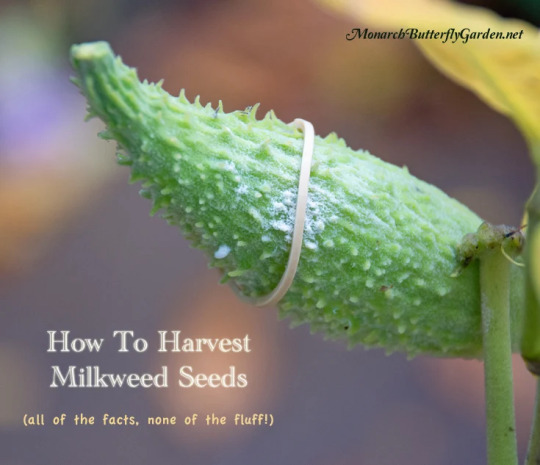
Regarding getting the seeds without the fluff, there's a few methods. The fluff on them (called comas) is designed to allow the milkweed to float in the air, similarly to dandelions--so it gets everywhere. I've seen methods to put the seeds in a bag or bucket with a few coins and shake it around to dislodge the seeds, but honestly the most life-changing revelation was seeing this video sometime in high school.
youtube
A common milkweed seedpod is used in this example, but I've found it still works perfectly with other milkweeds I've tried it on. Usually I leave the center support in the pod and just press my thumb on it while brushing the seeds off, then shake them out.
At this rate! I have gone on about milkweeds way too long. But I hope this was helpful to you and others! If anyone else seeing this has special advice to give, by all means, go ahead!
#outdoor gardening#gardening#seeds#seed saving#seed collecting#wildflower seeds#wildflowers#ani rambles#out of queue#answered asks#long story short: i identify what I'm wanting to collect seeds from and then google 'how the fuck do you do that'#and then a nice person on the internet from 10 years ago is like 'here's exactly how to do that' and i go 'cool'
32 notes
·
View notes
Text

Opium poppy seedpods (papaver somniferum).
It’s seed saving time! Once the pods are brown and the seeds are black, they’re ready to harvest. You can eat the seeds. They’re not psychoactive and make lovely baked goods, or you can scatter the seeds in autumn or late winter to grow in the spring. Poppy seeds need to experience winter to germinate. Direct sow on the ground where you want them to grow because they don’t transplant well. Opium poppies are annuals and need to be started from seed each year anew.
#bane folk#opium poppy#Breadseed poppy#papaver somniferum#poppies#poppy seeds#seed saving#seed collecting#poisonous plants#toxic plants#medicinal plants#poison path#poison garden
44 notes
·
View notes
Text

My greenhouse onions look like a school of fish, I love them! I wasn't sure I'd be able to grow onions in the aquaponic towers above the fish tank because, well, there's no soil and they're very squished in vertical towers, but they just went "no worries we'll adapt" and grew vertically in this nice ocarina shape
#crawling along#i am officially self-sufficient when it comes to onions!#which is a small but satisfying milestone#i've been able to grow enough for all my cooking needs continuously all year long#and also collect & use their seeds. so these are 3rd-generation onions
1K notes
·
View notes
Text
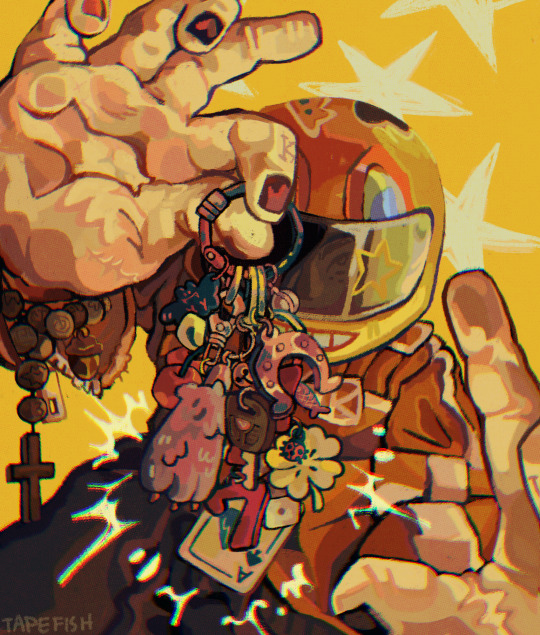
dont worry about me, got all the luck I need
#id in alt#my art#kobra kid#yes it took a while to build that collection yes it acts as an impromptu flail#something something stealing good luck charms from other racers (sometimes corpses sometimes not)#he'll take a racers lucky charms for losing over carbons/supplies (everyone hates that). he makes it personal lol#kobra voice: well CLEARLY it wasnt working for them#cherri voice: when you get jumped for this. I'll help#boy doesnt care if its good or bad luck hell take everything he can get#does it work? probably not. has he lost yet? probably not#also to list all the charms I added :] acorn bat cherries rabbits foot mustard seed ace of spades clover ladybug fish bell horseshoe#triple sevens snake eyes rosary/bad luck beads!!#also kobras knuckle tats say lucky yyou and the back of their hands are just. littered with stick and pokes of other luck symbols#way to tkake a motif and beat it into the ground
2K notes
·
View notes
Text
I’ve finished all the sidequests and shrines in BOTW. I’ve got like a month before TOTK is released. In light of this, I’ve decided to let Link run little normal errands all over Hyrule so he has a semblance of normalcy before I forcibly launch him into torment on May 12th.
#I'm gonna just#let him live out normal days#cook a bit#collect Korok seeds#ride his little horse around#play the minigames I've already beaten#I'm desparate for content help me#Occasionally I'll make him fight a Lynel because I think he'd do that when he's bored#Or at least I say he would so I don't go any more insane than I have to#Botw#Totk#Legend of zelda#breath of the wild#tears of the kingdom
849 notes
·
View notes
Text
November 2022: Three Days
Three days of photos... sometimes its just light like this.
A pretty good bottle in my opinion & I admit to being skeptical about a Nevada bourbon:

Two down & one to go. Once they’re filled, I add any excess ground eggshell to our compost bins or directly to the garden:

Seen while walking. Wine bottle garden borders:

First round of curbside pumpkin collecting:
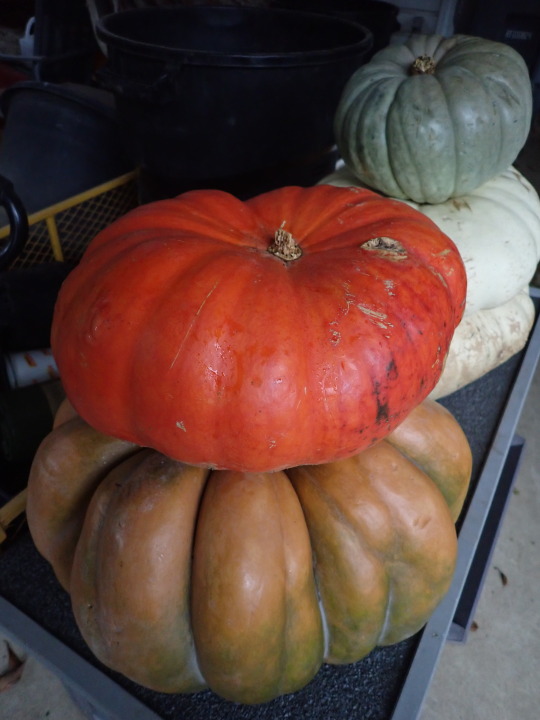
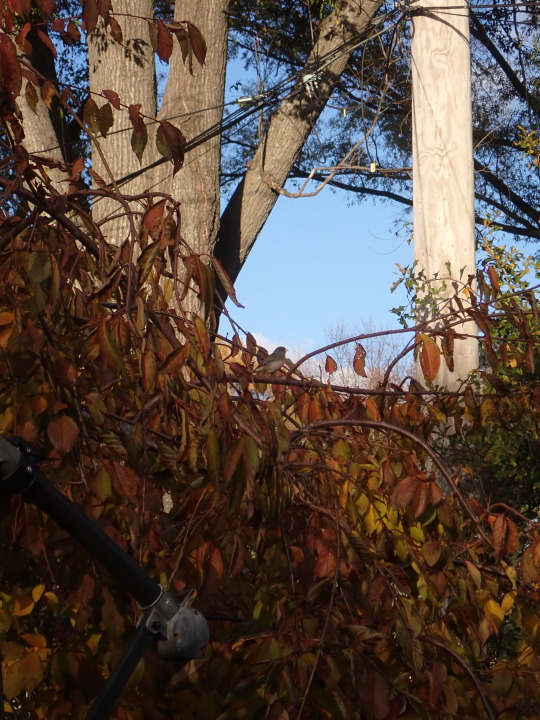
#bourbon#smoke wagon bourbon#nevada h&c distilling#nevada#las vegas#ground eggshell#composting#soil amendment#seen while walking#wine bottles#garden border#curbside find#pumpkins#seed collecting#garden#backyard garden#yoshino weeping cherry#dark-eyed junco#life in memphis#fall color#autumn leaves
2 notes
·
View notes
Text
Calling All Tag-Friendly Writeblrs
Do you like Writing? Do you like Games?
Interact with this so that I can add you to my Mental List of writeblrs to tag in fun writing games!
#Putting myself out there?#More like dousing myself in bird seed#and waiting for any takers#writeblr#writing games#tag game#I would like to collect many new shiny writeblrs#to blather about nonsense with#once I get the time
297 notes
·
View notes